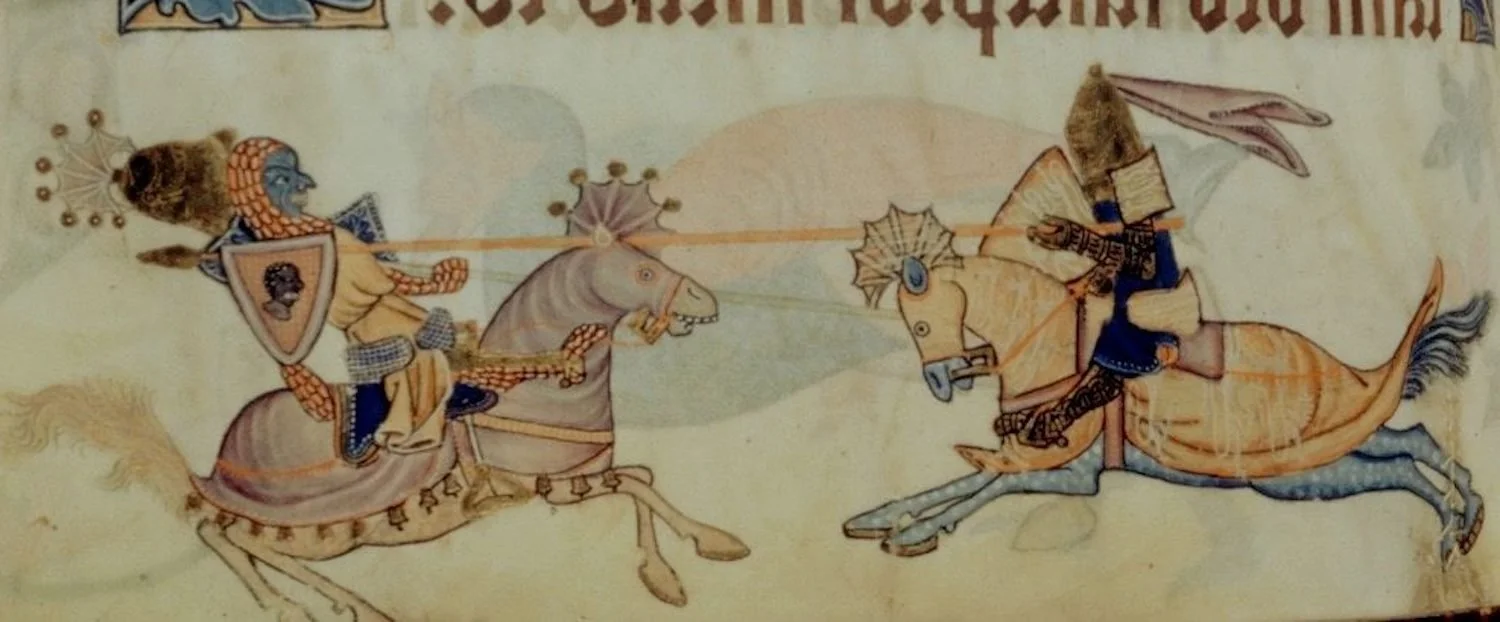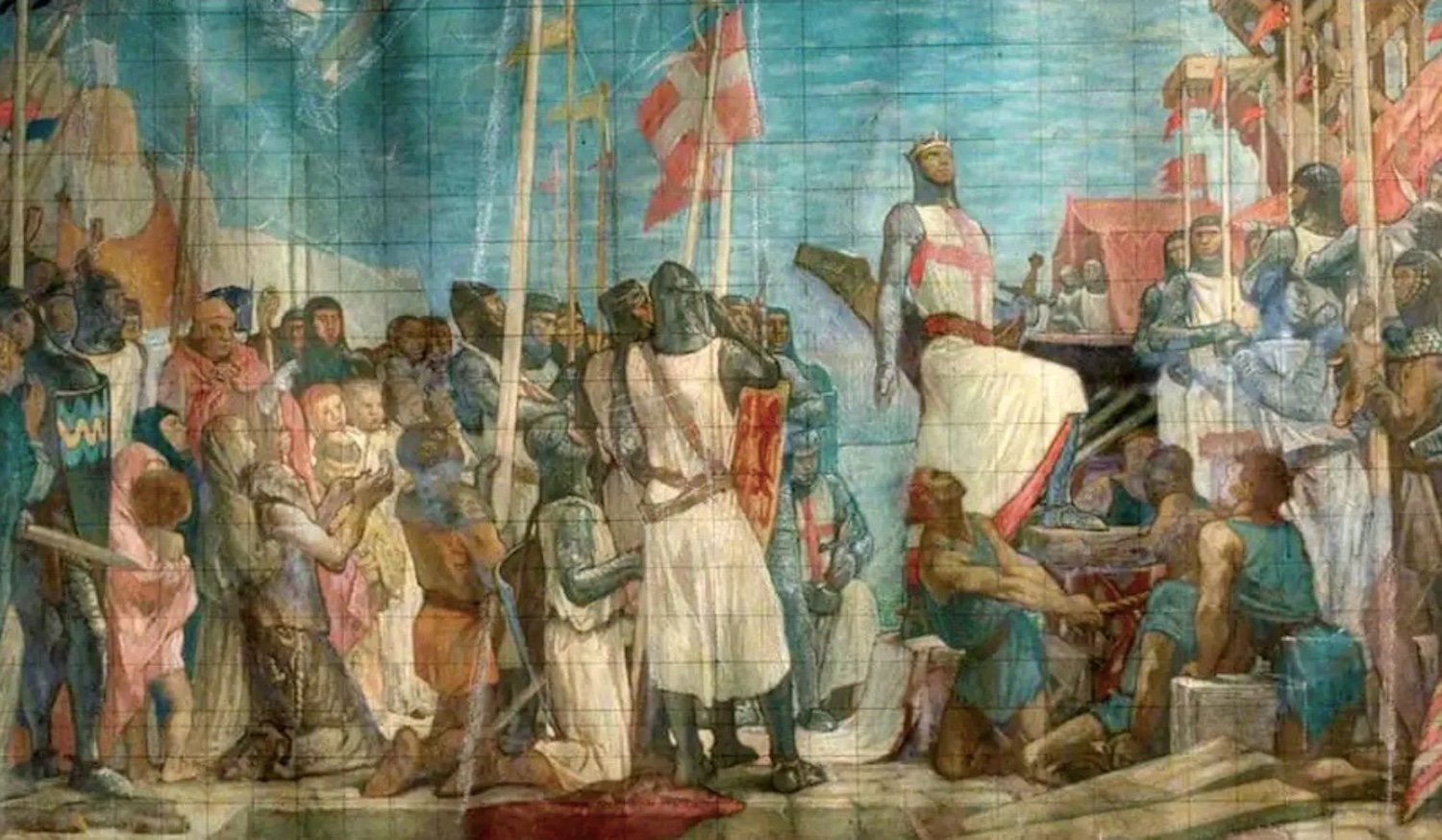The sky was steel-grey and spitting when we entered the Wachau Valley.
The winemakers didn’t mind though. Their vines, neatly draped along this 12-mile stretch of the river, were locked in a continental climate. Short cold winters and a long dry growing season means less than 20 inches of rain a year. Drip-irrigation is required if the sky grows stingy.
The outline of Durnstein Castle came into view on the port side of the ship. It clung to a ridge above the village.
Our captain was generous. He slowed the AmaVerde to a crawl. Those to port could fully appreciate Dürnstein Castle (German: Burgruine Dürnstein) overlooking the narrows. After passing it, the captain swung the bow around for a second run. Those on their balconies to the starboard could see it too.
Vicki and I braved the spitting rain and stood on the top deck watching both ways. We could make out the the grapevines creeping up a steep slope. Above their exhaustion, darker and more vertical slabs of natural stone arose. Higher still, and clinging to that natural stone, were the remains of broken masonry walls and irregular rooms. With a little imagination, I could see arches, window holes and doors. They opened and closed to the sky as we drifted by.
Dürnstein Castle was set on its lofty post in the middle of 12th century by one Hademar I of Kuenring. The castle overlooked the village of Dürnstein (population today: 900) and was connected to it by means of a wall. More importantly, it overlooked a strategic bend of the Danube in the rugged and constricting landscape of southern Austria.
A view of Dürnstein from Rossatz. An old inscription marks its reverse: "Castle of Dürnstein.” Image from here: https://www.dorotheum.com/fileadmin/lot-images/38Z181002/hires/englischer-reisemaler-1.-haelfte-19.-jahrhundert-5718604.jpg (accessed 7/18/2022).
Dürnstein may not tickle the eyes as other Danube castles do, but its secrets tickle the imagination, especially for Bible Land explorers. Here, Richard the Lionheart was imprisoned on his return from the Crusades. How he was captured and how he was released is the stuff of mystery (and music!). Consider his capture here; we’ll save his release for another post.
Richard is remembered as a pious king. He was tall, brave and handsome, a man of few words.
After the crushing defeat of the First Crusade in 1187 (see our post about that here), Richard renounced his wickedness and launched an initiative of his own. The success of his efforts (known as the Third Crusade) are measured in different ways, but this one point is sure: while the Crusaders came within sight of Jerusalem (Mountjoy), Richard was not able to take the city. It was a matter of logistics. With his supply lines stretched and vulnerable, the Lionheart made the calculated decision to pivot. He would return to Europe. And on his return, he was captured.
The AmaVerde pushed against the current for a short distance to Weißenkirchen in der Wachau. The crew stretched her lines taut and wrapped the cleats. Vicki and I went below decks to get ready.
The AmaVerde docked in Weißenkirchen in der Wachau.
On October 9 of 1192 Richard set sail from the Biblical Heartland. He had to be careful. The sea lanes had closed and as every good sailor knew, the open Mediterranean could be treacherous in the winter. Making matters worse, Richard’s rivals (like “Prince John” of Robin Hood fame) along with other old enemies were watching for his return. They preferred the good king gone.
Battling one winter storm after another, Richard was finally shipwrecked in the Adriatic. He had to continue on foot. The journey would not get any easier. He would have to cross 300 miles of “Christian” enemy territory, not to mention the icy Alps. Richard broke up his men into groups to confuse the pursuit. The towering king (he was reportedly 6’ 5” tall) traveled in disguise, dressed as a merchant.
Richard the Lionheart Embarks on Crusade, mural by Glyn Warren Philpot (1927). Image from here: https://www.thecollector.com/king-richard-i-the-lionheart/ (accessed 7/20/2022).
It almost worked. His own party raced west and at one point was covering 50 miles per day. But it wasn’t enough. A day’s journey away from safety, exhausted and feverish, they collapsed. The group took refuge in a small village just outside of Vienna. A German boy was sent to fetch supplies. His repeated returns raised the suspicions of the locals and the authorities were alerted.
Confronted, the king refused to surrender to anyone except Leopold V of Austria. Leopold had been with Richard at Acco in the Holy Land just a year before. However, the duke had been deeply insulted when Richard reportedly threw down his flag. This act was not forgotten and would cost Richard—and England—dearly.*
Betrayed, the Lionheart was taken to a secret location and held for an enormous ransom. The place? Dürnstein Castle, of course. Who could possibly find him there? How could he be rescued? Who would pay such a ransom? For Richard, darkness fell across the cold stones.
View to the modern village of Dürnstein. The castle where Richard the Lionheart was imprisoned sits on the ridge above.
The door opened. Vicki and I came out of our berth. We were ready to ride like the wind to Dürnstein. Our bicycles were waiting.
*There is more to the story than this insult. Rumor has it that Richard also may have helped arrange the murder of his Leopold’s cousin Conrad of Montferrat. But this is just a dirty rumor.
Our journey on the Romantic Danube was made possible by Educational Opportunities (EO), the parent company of the Jerusalem Center for Biblical Studies (JCBS). Many of our trips to the biblical Heartland are facilitated by JCBS. If you are interested in exploring the place where faith begins, check out our travel schedule here or email me at BibleLandExplorer@gmail.com.






